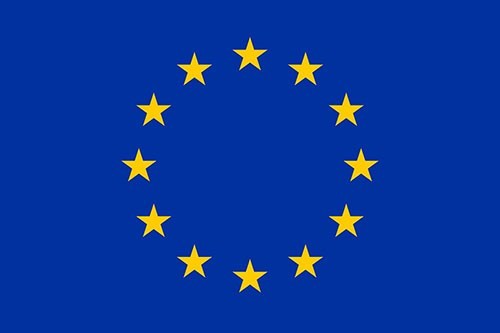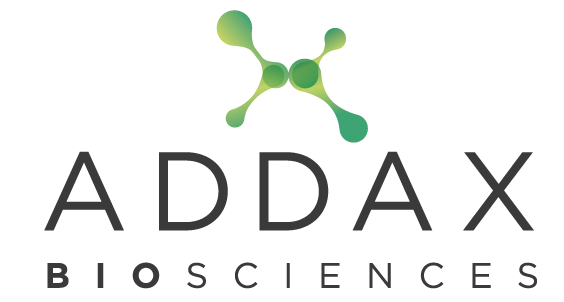Studies conducted by ADDAX Biosciences, in collaboration with the University of Padua, have confirmed the effectiveness of GAF® as a non-carcinogenic fixative for histopathology, immunohistochemistry and molecular analyses in the veterinary sector.
The multicentric study entitled “NON-TOXIC ACID-FREE GLYOXAL FIXATIVE FOR VETERINARY PATHOLOGY” has been presented at the SISVET Federation Conference (Italian Society of Veterinary Sciences) and the abstract published in the Journal of Comparative Pathology.
The entire study is available as preprint (“Non-Toxic Acid-Free Glyoxal Fixative for Veterinary Pathology“).
This is the result of ADDAX‘s collaboration with three of the most important Italian research institutes in the field of Veterinary Pathology: University of Padua, University of Turin and San Marco Veterinary Clinic and Laboratory.

Neutral buffered formaldehyde (NBF) (a, c, e) versus glyoxal-based fixative (GAF) (b, d, f) fixation.

Neutral buffered formaldehyde (NBF) versus acid-free glyoxal-based fixative (GAF) at transmission electron microscopy (TEM).
a) Lung, NBF-fixation, horse, transmission electron microscopy (TEM).
b) Lung, GAF-fixation, horse, transmission electron microscopy (TEM).
Note better preservation of cell membranes and organelles when compared to NBF.
The research in the veterinary field was conducted through a comprehensive evaluation of morphological, histochemical, immunohistochemical (IHC) and molecular analysis results of samples fixed with GAF®, comparing them with those obtained from fixation in neutral buffered Formalin (NBF).
The study involved 65 samples: 43 surgical biopsies, 8 endoscopic, 14 necropsy samples, originating from 52 dogs, 5 cats, 4 horses, one bovine, one goat, one rabbit, one sea turtle. The extensive sample of animals, types of sampling, and organs studied ensured a wide-ranging and in-depth comparison of the characteristics of both fixatives used.
Veterinary Pathologists from the 3 involved Centers conducted an evaluation of the results through an optical microscope, using a quantitative score (1-5, with 3 being the fixed value for Formalin and the value of GAF® assigned for each case).
The results highlighted that the quality of tissue preparations fixed in GAF® and Formalin is comparable. GAF® allowed for superior performance compared to Formalin in preserving muscular structures, nuclear features, and immunohistochemical staining for membrane or cytoplasmic antigens.

The study also emphasizes that the yields of DNA and RNA were higher in samples fixed in GAF (P<0.05) and the tested genes (p53 and COX1) were amplified more effectively. RNA scope showed positive results for c-KIT expression in mast cell tumors fixed in GAF.
Based on these data, the non-carcinogenic GAF fixative not only enables excellent macroscopic, histological, and immunohistochemical analysis of tissue samples, but also leads to enhanced molecular analysis.

Visceral organs fixed in glyoxal-based fixative (GAF) for 15 days.
Metastatic hemangiosarcoma in the lung, dog.
Renal cortical cyst, cat.
GAF® enhances standard procedures, making it easier to use not only in laboratory but also for transportation and mobility due to its lower toxicity compared to Formalin.
GAF® presents an encouraging prospect for advancing education, diagnostics, and research in the field of veterinary pathology.
GAF® represents a valid alternative to Formalin, even in the field of veterinary pathology.
ADDAX Biosciences was born as a spin off of the University of Turin, which contribuited with support to the research activity.

Our company has received funding from the European Union’s Horizon 2020 Research and Innovation Programme under Grant Agreement No 8157692.

The project “GAF – Towards a hospital without Formalin” is realized thanks to the co-financing of POR FESR Piemonte 2014-2020, Ob.1 – “Research, technological development and innovation, I.1.b.4.1 “Support for creation and consolidation of innovative start-ups with a high intensity of application and knowledge and research spin-off initiatives”.
The project aims to validate, produce and market GAF, a histological fixative without carcinogenicity, that works as a substitute to Formalin. Achieving the project’s objectives will improve the working conditions of health and research professionals, protecting them from the risk of developing occupational diseases caused by inhaling Formalin vapours.





